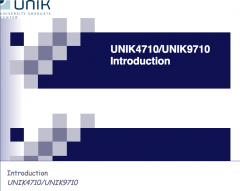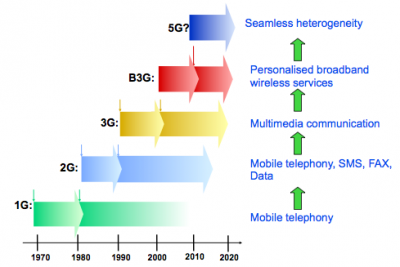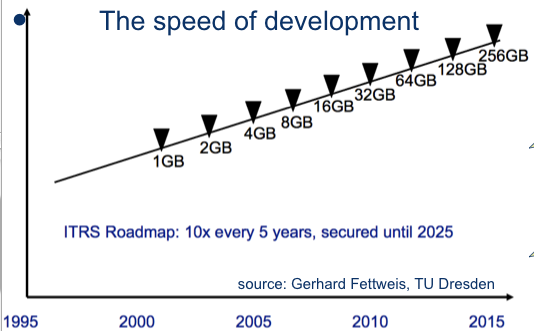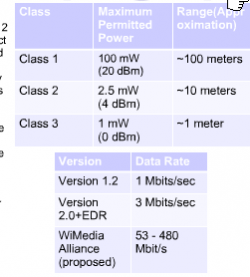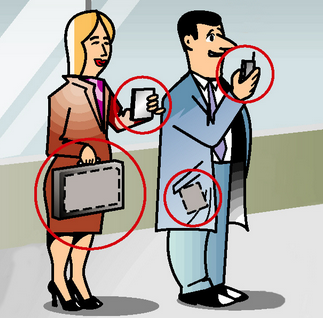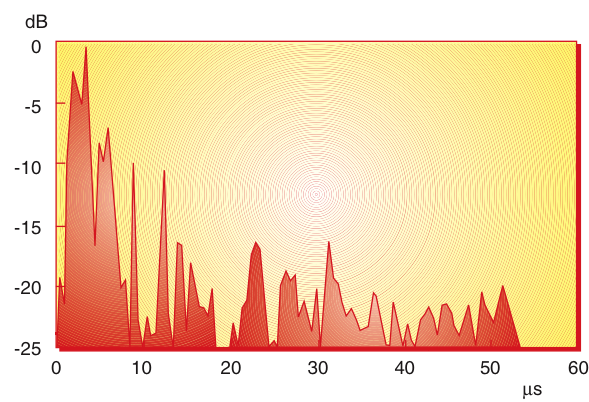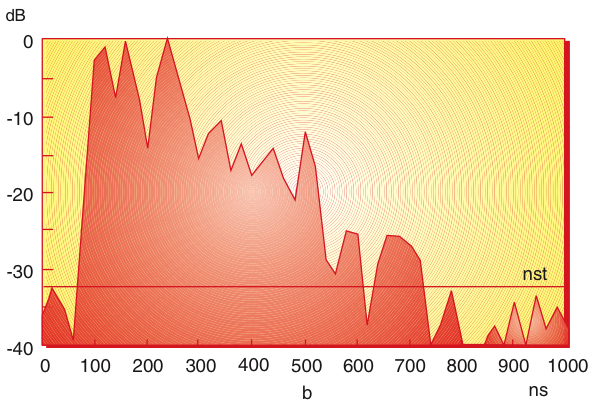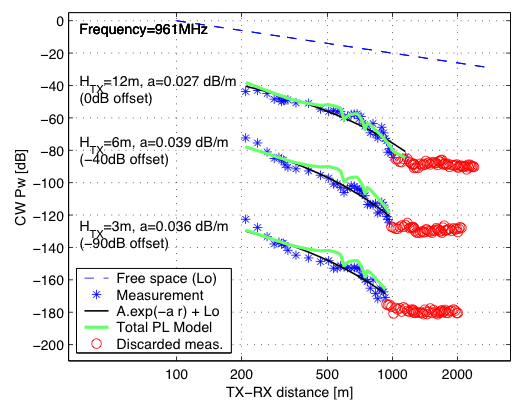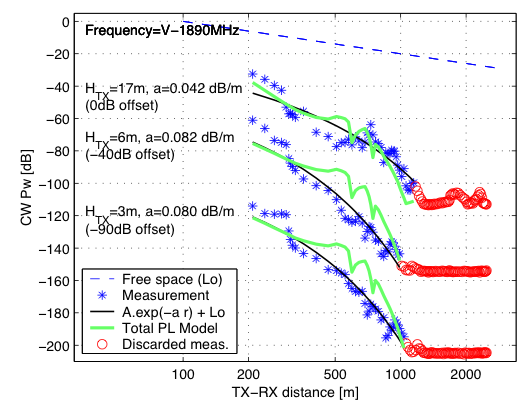Environments for Mobile and Wireless Communications (C1-C3)
| Wiki for ITS | ||||||
|---|---|---|---|---|---|---|
|
Environments for Mobile and Wireless Communications (C1-C3)
| Course | UNIK4700, UNIK9700 |
|---|---|
| Title | Frequency Ranges and Propagation Models for Communications (C1-C3) |
| Lecture date | 2017/10/31 1300-1600 |
| presented | by Josef Noll |
| Objective | The lecture will provide a short overview over propagation models in several environments, e.g. rural and indoor. Typical models are discussed, and references given to future work. The second part of the lecture focusses on the development of your own examples, where a short presentation is expected. |
| Learning outcomes | * get feedback on your topics
|
| Pensum (read before) | Prepare a presentation providing a short overview over your scenario, expected outcome, as well as questions |
| References (further info) | |
| Keywords | Frequency, Propagation Models, Wifi, Mobile Systems |
this page was created by Special:FormEdit/Lecture, and can be edited by Special:FormEdit/Lecture/Environments for Mobile and Wireless Communications (C1-C3).
Presentations
- Lecture notes H17: Media:20171031UNIK4700.pdf, Discussion with Ramtin on SDN: Media:20171031SDN_discussions.pdf
- Lecture notes H16: Media:20161101UNIK4700h16-IR.pdf
Present the first assignments:
- Raul: "Frequency range and type of wireless communications" Media:Frequency_Range_Communications_Raul.pdf
- Yun Ai: "Propagation Models" Media:Propagation_Models_Yun_Ai.pdf, Media:Propagation_Models_Yun_Ai.pptx
- Lecture notes H14: Media:201409UNIK4700h14-Wifi-Propagation.pdf
- Title
- UNIK4700/UNIK9700 Mobile Generations and Radio Models
- Author
- Josef Noll,
- Footer
- Environments for Mobile and Wireless Communications (C1-C3)
- Subfooter
- UNIK4700/UNIK9700
⌘AA2-Mobile Generations
⌘History of wireless communications
while 1G and 2G were all about radio interfaces,
- 3G and Beyond 3G (B3G) are all about services
- 4G is using mobile broadband everywhere
- 5G will be truly heterogeneous network
Comments
⌘Speed of technology
- "There might be a need for 5 computers" (1943 Watson(?), 1951 Hartree)
- Mobile: NMT, GSM, GPRS, EDGE, UMTS, 3G, HSDPA, SMS, EMS, MMS,... DVB-H,...
Comments
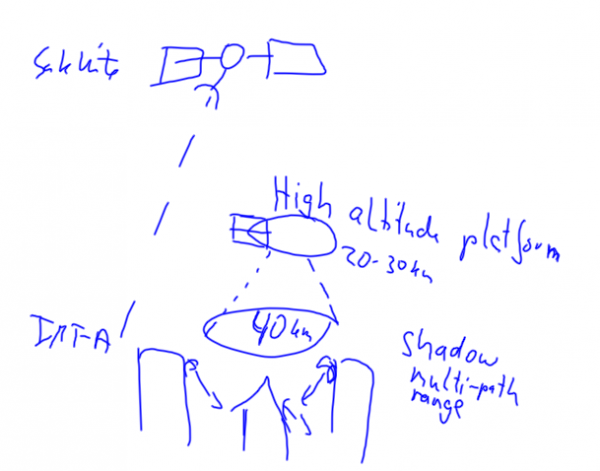 Future communication systems, composed of IMT-A (ground), High altitude platform (HAP) and satellite
Future communication systems, composed of IMT-A (ground), High altitude platform (HAP) and satellite
%Wireless standardisation forums
- ITU-T
- ETSI
- IEEE
- 3GPP (3G Partnership Project) and 3GPP2
- Bluetooth SIG, zigbee alliance
and a lot of others addressing interworking
- OMA (open mobile alliance)
- UMTS forum
- ...
⌘Frequency spectrum
⌘Wireless technologies
Ultra short range
- RFID, NFC
Vicinity
- Bluetooth, WiMedia,
- Zigbee, ANT+, Bluetooth Low Energy (BLE)
Local area
- Wireless LAN, 802.11 family
- Wireless telephony: DECT (Digital Enhanced Cordless Telecommunications)
Mobile Communications:
- 1G: NMT
- 2G: GSM
- 3G: UMTS
- 4G: LTE - IMT-A
- 5G
Long Range Wide Area Network (LPWAN)
- LoRa,
- Sigfox,
- Ingenu-RPMA,
- DASH7,
- Weightless
Mobile satellite communication:
- Geostationary (Inmarsat A, C, M) or low orbit (e.g. Iridium)
⌘Trend: Personal Networks
Interconnectivity
|
⌘Expectations towards global coverage
- According to Ericsson, Mobile Technologies are available for 50% of the world's population (2013), and the coverage will increase to 75% by 2017.
- According to Internet.org (Facebook, Opera Software, ....), only 1/3 of the world's population has access to the Internet (2013).
- An extrapolation by the Basic Internet Foundation points out that even in 2017 about 45% of the population will not have access to Internet, mainly due to affordability. Thus they promote the free access to basic information of the Internet, being text and pictures.
⌘Propagation scenario (ITU-R)
| Radio coverage [km2] | Distance [km] | speed of mobile [km/h] | type of cell | |
| Indoor office environment | 0.01 | 0.1 | 3 | picocell in open space environment |
| Pedestrian mode | 4 | 2 | 3 | Microcell |
| Vehicle | 150 | 13 | 120 | Macrocell |
- see page 31 of ETSI TR 101 120 report for test environments
- impact on walls?
⌘Propagation models
- Environments (indoor, outdoor to indoor, vehicular)
- outside (Lee, Okumura, Hata, Unik/COST231-Hata, Unik/COST231-Walfish-Ikegami)
- inside (One-slope, multiwall, linear attenuation)
References:
- T.K. Sarkar, J. Zhong, K. Kyungjung, A. Medouri, M. Salazar-Palma, "A survey of various propagation models for mobile communications", IEEE Ant. Prop. Magazine, 2003, 45(3) 51-82
- M Hata, "Empirical formula for propagationloss in land mobile radio service". IEEE Trans Vehicular Technology, 1980, vol 29, pp 317-325
- F Ikekami, S Yoshida, T Takeuchi, M Umehira, "Propagation factors controlling mean field strength on urban streets", IEEE Trans Ant. Prop., 1984, 32(8), 822-829
- T.S. Rappaport, S. Sandhu, "Rdaio Wave propagation for Emergin Wireless Personal Communication Systems", IEEE Ant. Prop. Magazine, 1994, 36(5), 14-23
we will focus only on ETSI models: statistical models to generate path losses and time delay structures for paths in each test environment.
(Source: Cost259, page 80ff, and ETSI TR 101 120)
⌘ Mobile Propagation References
References:
- Eurescom P921: UMTS radio access, http://www.eurescom.de D2-UMTS radio access
- ETSI / ITU propagation channels (Vehicular A/B, Outdoor to indoor A/B)
⌘ C2-Outdoor communications
⌘Measurements in rural farmland
- Typical IR from Farm_1, 1718 MHz. Total received power was –84 dBm, 20 dB above GSM sensitivity level
(Source:R Rækken, G. Løvnes, Telektronikk)
These questions are valid for all of the following impulse responses
- from delay, calculate reflection factor and free space attenuation
- describe characteristics of reflection
⌘ Measurements in rural farmland
- Typical IR from Farm_2, 953MHz. Total received power was <93dBm
(Source:R Rækken, G. Løvnes, Telektronikk)
⌘Measurements in cities
- Typical IR from City street measurements, 1950 MHz, Oslo. Output power 25 dBm ( in mW?). Omnidirectional
-Dipoles used as transmit and receive antennas.
(Source:R Rækken, G. Løvnes, Telektronikk)
why almost equal distribution? What effect?
⌘ETSI urban pedestrian
- Outdoor to indoor and pedestrian test environment, based on Non LOS (NLOS)
- Base stations with low antenna height are located outdoors, pedestrian users are located on streets and inside buildings and residences
- TX power is 14 dBm, f = 2000 MHz and r is distance in m
- Assumes average building penetration loss of 12 dB
- Path loss model:
[dB]
⌘COST Walfish-Ikegami Model
- taking into consideration propagation over roof tops
- assumes antennas below roof top
- Path loss model:
[dB]
⌘Alternative Street Microcell Path-loss
- Outdoor propagation, consists of "adding of paths"
- c is angle of street crossing. c = 0.5 for 90 deg crossing
- k_0 = 1 and d_0 = 0
- Path loss model:
[dB]
- illusory distance
with
⌘ETSI vehicular
- larger cells (typical few km)
- TX power 24 dBm for mobile phone, transmit antenna height
over roof top (typical 15 m), distance r in km, f = 2000 MHz
- Path loss model:
[dB]
⌘Forest, 961 MHz measurements
- slightly hilly terrain
(Source:István Z.Kovács,Ph.D.Lecture,CPK, September6, 2002;p.27/45 )
⌘Forest, 1890 MHz measurements
- slightly hilly terrain
(Source:István Z.Kovács,Ph.D.Lecture,CPK, September6, 2002, p.27/45)
⌘Examples
establish table (L free space, pedestrial, outdoor, ...) with typical values for 900 and 2000 MHz and distances from 100 to 3000 m
⌘ETSI Indoor Office test environment
- derived from COST 231
- r is transmitter-receiver distance in m; n is number of floors in the path
- path loss L should always be more than free space loss. Log-normal shadow fading standard deviation of 12 dB
- Path loss model:
[dB]
⌘Modelling approach - indoor
Typical ETSI parameters: 8 kbps, BER < 10'^-3^', 20 ms delay, 50 % activity
(Source:Radio Wave Propagation for Telecommunication, Springer, and ETSI TR 101 112 V3.2.0 (1998-04))
Next lecture D1 Proximity Systems such as NFC, RFID
